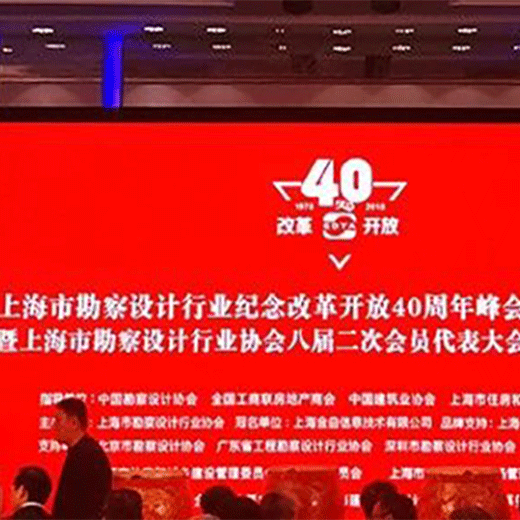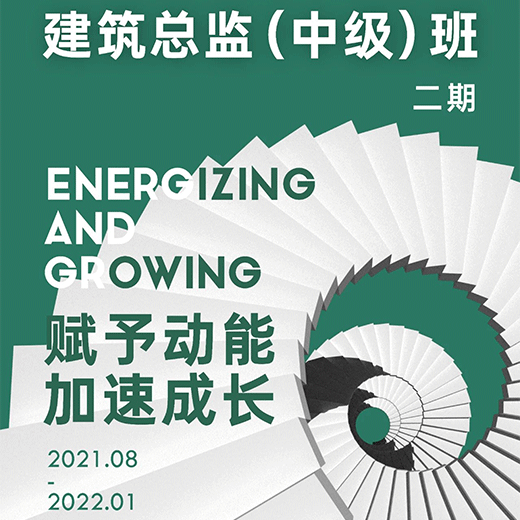
From August 27th to August 29th, 2021, the second course of the first phase of the structural elementary class hosted by the Zhubo Design Training Institute started as scheduled. A total of 27 students from Zhubo Design participated in the course.
Wen Jingbo, director of Zhubo Design Review Center, Chen Lei, deputy chief engineer of Zhubo Design Structure, and Li Bin, deputy general manager of Zhubo Chengmai Company, served as the course instructors.
DAY-1
Construction drawing review


On August 27th, Wen Jingbo, director of the Zhubo Design Review Center, started the first day of this structural elementary class with the theme of "Construction Drawing Review".
This course analyzes and summarizes the key content of the quality management system involved in the review of design documents at each stage, from the review outline and review points, strong rules and construction drawings review common problems, building structure consistency, major component review and other aspects. Explain.
DAY-2
Structural optimization design


On August 28th, the course was taught by Chen Lei, deputy chief engineer of Zhubo Design Structure, with the theme of "Structural Optimization Design".
The course describes how to control the key indicators of the structure by combining theory with practice, find out the weak links of the structure, and reasonably arrange the force-bearing components to achieve the purpose of optimal design. Through learning, students can master different types of residential structure design skills, and achieve the goal of saving materials through conceptual design.
DAY-3
Common problems of structure and building coordination
Common structural design and handling methods of construction errors


On August 29th, Li Bin, the deputy general manager of Zhubo Chengmai Company, gave a course with the themes of "Frequently Asked Questions about Structure and Building Coordination" and "Common Structural Design and Construction Error Handling Methods".
"Key Points of Cooperation between Structure and Building" mainly introduces the various aspects that are prone to problems in the design process, and reminds the person in charge of the structure to pay attention to and take measures in the project management process to reduce the occurrence of project errors and omissions.
"Common structural design and construction error handling methods" mainly discusses how to better correct errors and reduce losses based on different types of on-site error handling cases.
About the harvest in just a few days
The students have something to say
Interview with some students of the second course of the first phase of Zhubo Design Structure Elementary Class

Huang Wenxu | Structural Engineer, Wuhan Company
Q: After the course, what is the difference in understanding when communicating with other majors at work? Does it help to understand the project more quickly?
A: The main reason for the misalignment of drawings between various disciplines in engineering design is the lack of communication. In the subsequent engineering design, when there are special or unconventional designs in your own drawings, you must inform other majors. When you modify your original design, you must indicate in the new drawings and inform the other party. When receiving other professional materials, the areas that are prone to problems should be checked first to avoid repeated design modifications.

Q: What are the tips for optimizing the program learned in the course?
A: This course focuses on the optimization of the framework-core tube structure. After learning, I summarized a few tips:
(1) The frame is in the front and the core tube is behind, the frame rigidity cannot be weak, and the core tube rigidity cannot be too strong. The coordination of the rigidity of the two is the optimal solution;
(2) The layout of the core tube should be reasonable, and try to avoid the offset tube layout;
(3) The core tube cannot be too small. The size of the core tube and the height-to-width ratio of the building are important foundations for economy;
(4) The inner wall of the core tube needs to be subtracted, and the thickness of the upper core tube should be greatly reduced.


Chen Qingbo | Chief Structural Engineer, Guangfo Company
Q: What are the impressive difficulties in previous actual projects? Did you find a more suitable solution to this type of problem after this course?
A: I have done a 90m frame-core tube project in the 7-degree area before. The core tube has basically no offset, but the difference in the two-way aspect ratio is large. It is difficult to calculate the period ratio and displacement ratio indicators. At that time, the design In order to control the displacement ratio index, individual shear walls were set up around the low-rise area. Mr. Chen Lei’s course also mentions an example of frame-core tube layout. Mr. Chen's approach was contrary to our design thinking at the time. In the case that the core tube shear wall meets the shear requirements, it controls the displacement ratio by reducing the core tube shear wall, weakening the internal rigidity of the core tube, and strengthening the rigidity of the core tube surrounding shear wall, so that the layer stiffness and the layer center of gravity coincide. . He provided me with a new way of thinking in dealing with this type of structure, and made the structure more economical.

Q: After this course, what improvements have been made in project control?
A: General Wen’s construction drawing review training course focuses on the company’s drawing review examples to explain to the students the general provisions that are easy to make mistakes in our usual design and the mandatory provisions of beams, slabs, columns and walls that are often made, especially to us. Various mistakes of the stairs and the structural columns blocking the doors and windows. Summarizing the normative provisions and presenting examples in the classroom made me realize that as a professional, I should control the quality of the drawings of the structural profession, and better give the owner a satisfactory drawing, and improve the owner’s recognition of the design institute. It summarizes which part of the drawing should be reviewed during the usual drawing review.
Q: What kind of help do you hope the follow-up courses will provide to your professional field?
A: I hope that we can continue to provide some special structure explanation courses, such as steel structure, steel-reinforced concrete structure, etc., which will occasionally be involved in the work. For example, steel-reinforced concrete structures, the method of beam-column joints, whether the steel frame is installed in the middle of the beam, the difference in force, whether it needs to be extended to the foundation surface, whether it is necessary to install embedded column feet, everyone’s understanding and practice are different. All the same, I hope that through subsequent courses, I have a better understanding of these special structures.

Zhang Yi | Structural Engineer, Xi'an Company
Q: After the course, what is the difference in understanding when communicating with other majors at work? Does it help to quickly understand the project?
A: After this training, communication with various professions has been strengthened more consciously, especially in areas where the structure and other professions are prone to errors. In communication, it is necessary not only to properly output simple structural theories, but also to absorb basic knowledge of various professions. To clarify the problem and solve the problem, it is best to summarize a set of methods to solve the problem!

Q: After the course, what improvements have been made in project control?
A:. Drawings are the products of construction companies, and high-quality drawings are the driving force of the company's continuous output. The control of the quality of drawings is related to the lifeline of the company. Therefore, we must first ensure that the reviewers can comprehensively and focus on the quality of the drawings and the consistency of the building and structure; secondly, we should review and review each part of the components from the common specification strong issues. In addition, you can use ai to review the drawings and initially strengthen the specifications. Preliminary review of strips and non-strong strips; finally, the places that have a greater impact on the site (preparing holes for shear wall equipment, and retaining doors when the stairs meet, etc.) should be focused on.


Wang Tao | Structural Engineer, Shenzhen Company
Q: After the course, have the skills in drawing quality improved?
A: Through this course, it is clearer that the review of design drawings is a vital link in the project construction process and plays an important role in the design cycle. Through the review of design drawings, avoid the occurrence of "errors, omissions, collisions, deficiencies" and violations of structural specifications, such as strong rules and compliance rules among various disciplines, avoid losses and hidden dangers caused by design errors to the project construction, and eliminate the impact on the project construction Factors such as progress, safety, and quality will save time and cost and improve economic benefits for project construction.

Q: What are the impressive difficulties in the actual projects you have participated in in the past? After this course, have you found a more suitable solution to such problems?
A: In the past, the layout of the early-stage structural plan of the project was always unreasonable, and the design indicators did not meet the specification requirements; during the compilation of construction drawings, there were always things that violated the strong rules. Through this training, I learned the establishment of the structural force transmission system and the rationality of the structure layout, the review of the proofreading and the strong regulations in the classroom, and the personal proofreading of the engineering case. After learning, I have a deeper understanding of the structure of structural knowledge. Knowing, to avoid the same problem from happening again in the future project design.

Wu Ping | Deputy Director of Structural R&D Center Structural Engineer
Q: After the course, in my professional work, will the project progress more smoothly? What tips for optimization solutions have been learned?
A: Through the course of "Structural Optimization Design", Mr. Chen, I have mastered the basic skills of load value, minimum reinforcement specified by the code, and calculation model rationality; correctly select a reasonable structure system and optimize the force-bearing components ; The best solution for construction, electromechanical, and structure; keep improving, build quality projects and other aspects, which will be more smooth and efficient for the promotion of projects in their own professional fields.

Q: After the course, what is the difference between communicating with other majors at work? Is it possible to understand the project more quickly?
A: Through this training, my professional knowledge and business ability have been greatly improved, and the communication between the various professions is better and smoother and more tolerant. This training helped me to build up the confidence that I can calmly deal with difficult challenges at work. Also, it made me realize the importance of learning. I will make good use of my time to learn more about the latest knowledge of this major, and I will humbly ask for experience from various leaders and colleagues, and constantly improve my ability level, and do my job better. .
So far, the second course of the first phase of the Zhubo structure elementary class has come to a successful conclusion. Zhubo Training Academy will launch the third course of the first phase of the architectural director (intermediate) class in the next issue, so stay tuned.
Preview of the next course

*Follow the official account of Zhubo Design, and there will be more exciting reports on training courses in the future.



